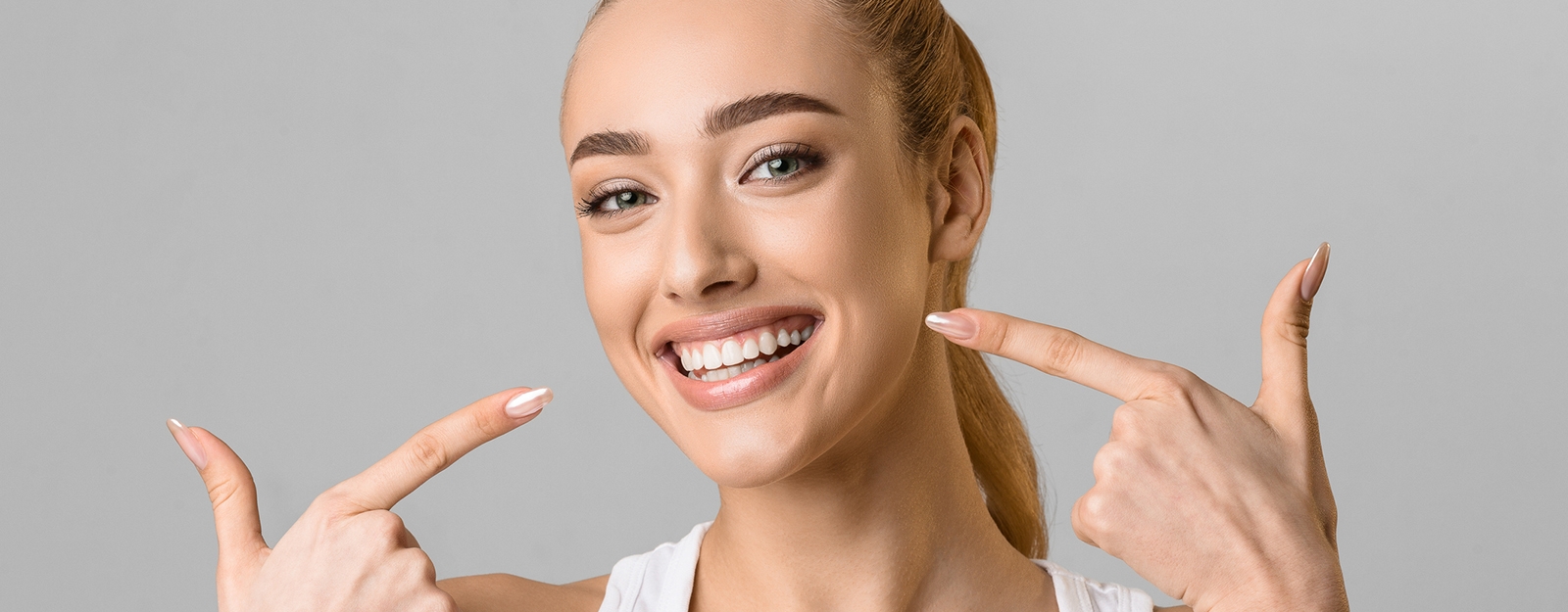
The Drab to Fab Smile & The Three S’s … Straight, Smart & Sexy
July 19, 2022
The Cosmetic Dental Challenge
Patients may be unhappy with their smiles for several reasons and arrive seeking a more confident look., but the number one motive for patients seeking cosmetic improvement is the color of their teeth.
Tooth Whitening Options
We must consider which tooth whitening technique is appropriate for you and should be used and the limitations of the procedure.
The Take Home Option
When bleaching treatment is initiated for normal teeth with” take-home” trays only, there may be minimal color change for a day or two, then the teeth begin to significantly lighten.
The In-Office Option
Power bleaching”, initially performed in the dental office under a special light and more powerful bleaching solutions will accelerate the initial phase. Patients are subsequently given the “take-home” variety of trays to continue the lightening process. This technique for normal teeth takes approximately two weeks to reach maximum effectiveness. The teeth will continue to lighten until they reach an endpoint or plateau, which is determined by their composition, not the product or technique. This contributes to the unpredictable nature of bleaching. Once the teeth reach their maximum whiteness, any further treatment or use of different products/concentrations will fail to improve that shade.
Considerations
Existing restorations, fillings or crowns that are present in a full smile should be evaluated for visibility and criticality of color because they will not lighten with bleaching, regardless of the material. Some surface stain removal may occur on composites, but the basic color of the restorations will remain the same. Therefore, if a restoration matches the existing color of the tooth, it may become unaesthetic after bleaching and need to be replaced. Patients must clearly understand the financial implications of replacing unaesthetic, tooth-colored restorations for an additional fee, because that cost may present an obstacle to proceeding with bleaching.

Other Such Pesky Stains
Perhaps not as challenging but worth mentioning are other common tooth stains: wine, tea, herbs, some fruits (blueberries), condiments (mustard) and many others. In general, these are easier to manage with tooth whitening and maintenance.
Tetracycline Stained Teeth
Tetracycline stained teeth present a unique challenge in our ability to lighten them. Tetracycline, a widely used antibiotic has been on the market for over 60 years to control infection. Unfortunately, it was not known at the time, but it causes permanent internal staining of developing teeth if used in children less than the age of 8. The discoloration is permanent and can vary from yellow or gray to brown.
Although the average treatment requires 3 to 4 months of nightly bleaching under doctor’s supervision with 10% carbamide peroxide, reaching the maximum whiteness could take as long as 15 months, depending on the initial color and location of the tetracycline staining.
Sensitivity During Bleaching
All patients who are considering bleaching treatment should be evaluated for a history of sensitivity. Those with existing sensitivity issues are more likely to experience increased sensitivity during bleaching.
Beyond using a low concentration of carbamide peroxide and a proper-fitting tray, the addition of a 10 to 30-minute tray application of 5% potassium nitrate prior to or after bleaching treatment can help reduce associated sensitivity. Potassium nitrate is found in most desensitizing toothpastes in the United States. When applied using the tray, a 5% potassium nitrate toothpaste worn for 10 to 30 minutes will successfully reduce sensitivity in more than 90% of bleaching patients.
Sensitivity generally occurs during the first 2 weeks of bleaching treatment. Although the tetracycline-stained patient will require bleaching treatment that lasts for many months, the sensitivity does not usually become progressively worse. To further reduce sensitivity issues, practitioners should wait 2 weeks after a dental cleaning before initiating bleaching, during which time the patient can brush with a desensitizing toothpaste.

Keeping Your New Smile White and Bright
It is a well-known fact that, when teeth are whitened, there is some regression back toward the original color of the teeth, but subsequent tray applications of bleaching agents, used as a “touch-up” will work quicker after the initial whitening series had been performed. However whitening agents if overused more frequently than as a touchup every 6-8 weeks could cause the teeth to become translucent and thus give an overall greyish look that is not reversible. To maximize the longevity of whitening treatment, minimize eating or drinking foods which would stain a white tablecloth. These would include but not limited to:
Bleaching vs Veneers
Several factors should be considered when choosing whether to bleach normal or tetracycline-stained teeth. Because the teeth lighten from the tip of the tooth towards the gum-line, the location of the darkened areas will have an impact on the result. Teeth with the darkest discoloration at the have the poorest prognosis for full lightening and may be good candidates for porcelain veneers.
Beyond Whitening… Dental Veneers
Porcelain Veneers are a custom-made thin porcelain shell designed just for you to cover the front surface of your teeth. This strong laminate is bonded to the front of our teeth effectively changing your smile and appearance.
What Does It Take to Get That Uniquely ‘You’ Iconic Smile?
- Color – together, we examine the color options that will enhance your overall appearance.
- Brightness – fresh and bright is bold and will bring out your smile to the world
- Shape – to make a lasting impression, the shape of your teeth should be straight and follow the natural curvature that compliments your face and dental arch.
- Symmetry – the size, length and shape of your top and bottom teeth need to have
- Proportion – the relative size of teeth to each other and how they fit with your overall features.
Of course, patients who whiten their teeth with porcelain veneers do not experience color regression and are not restricted from eating and drinking the foods mentioned above
For more information or to schedule a free cosmetic evaluation and dental make over, call us today (203) 245-7575

Our Office Hours
- Monday
- Tuesday
- Wednesday
- Thursday
- Friday
- Saturday
- Sunday
- 8 AM - 5 PM
- 8 AM - 5 PM
- 8 AM - 5 PM
- 8 AM - 5 PM
- 8 AM - 1 PM
- Closed
- Closed
Follow us at
© 2024 FRIEDLER DENTAL GROUP

